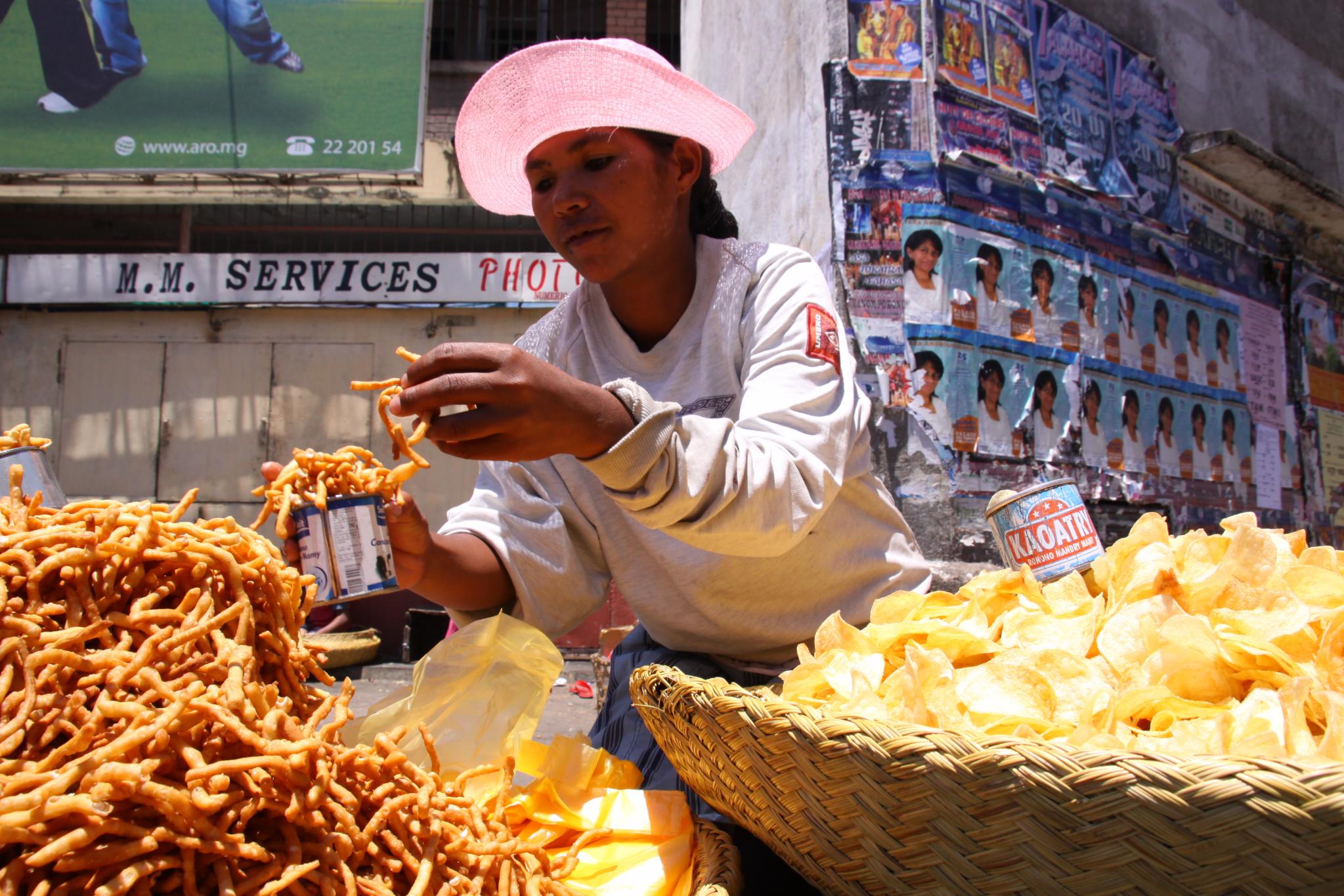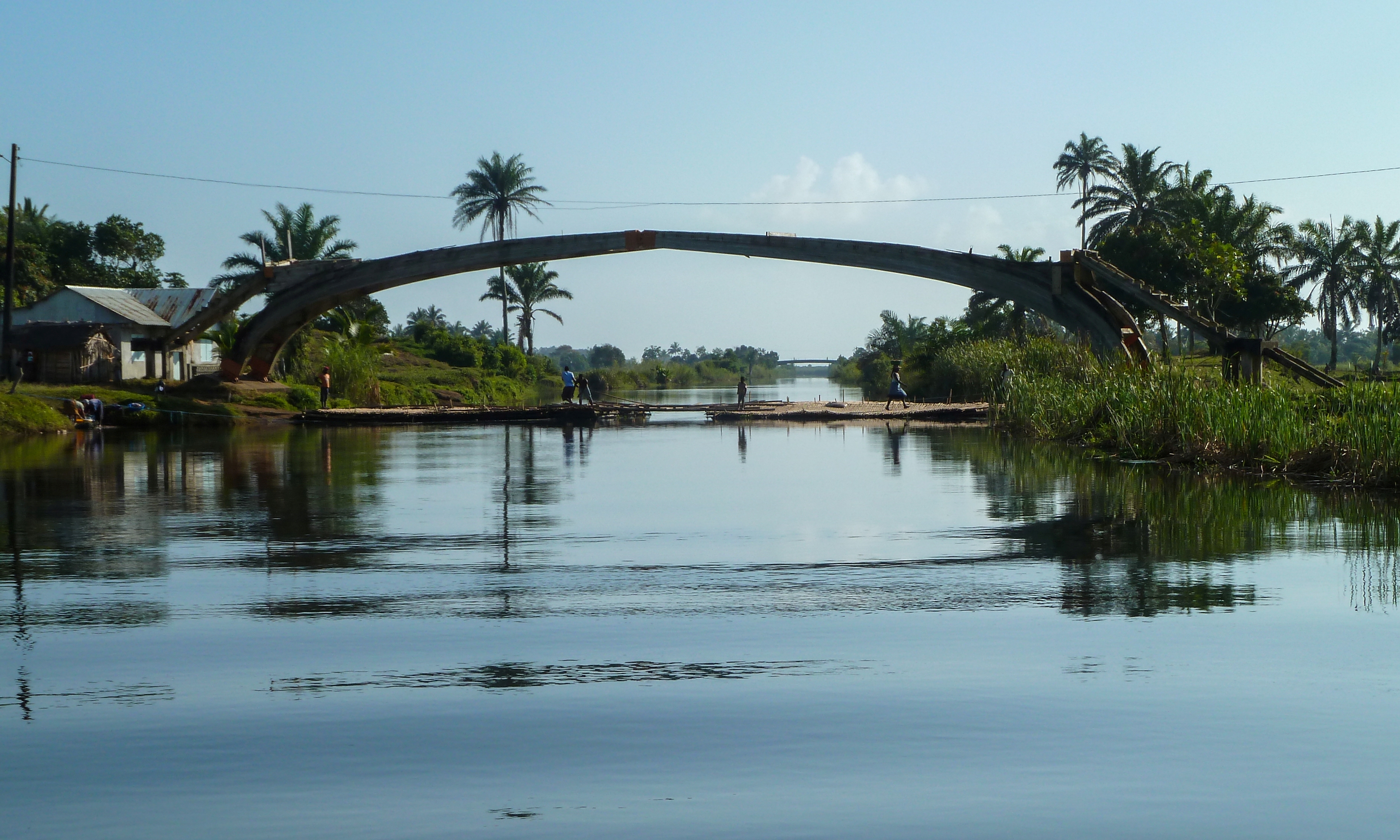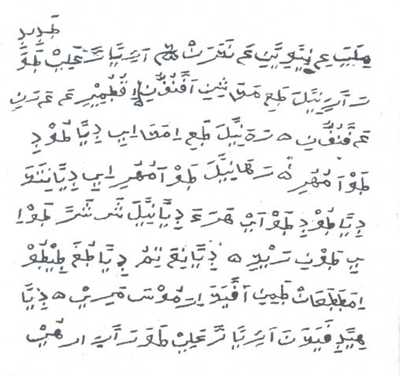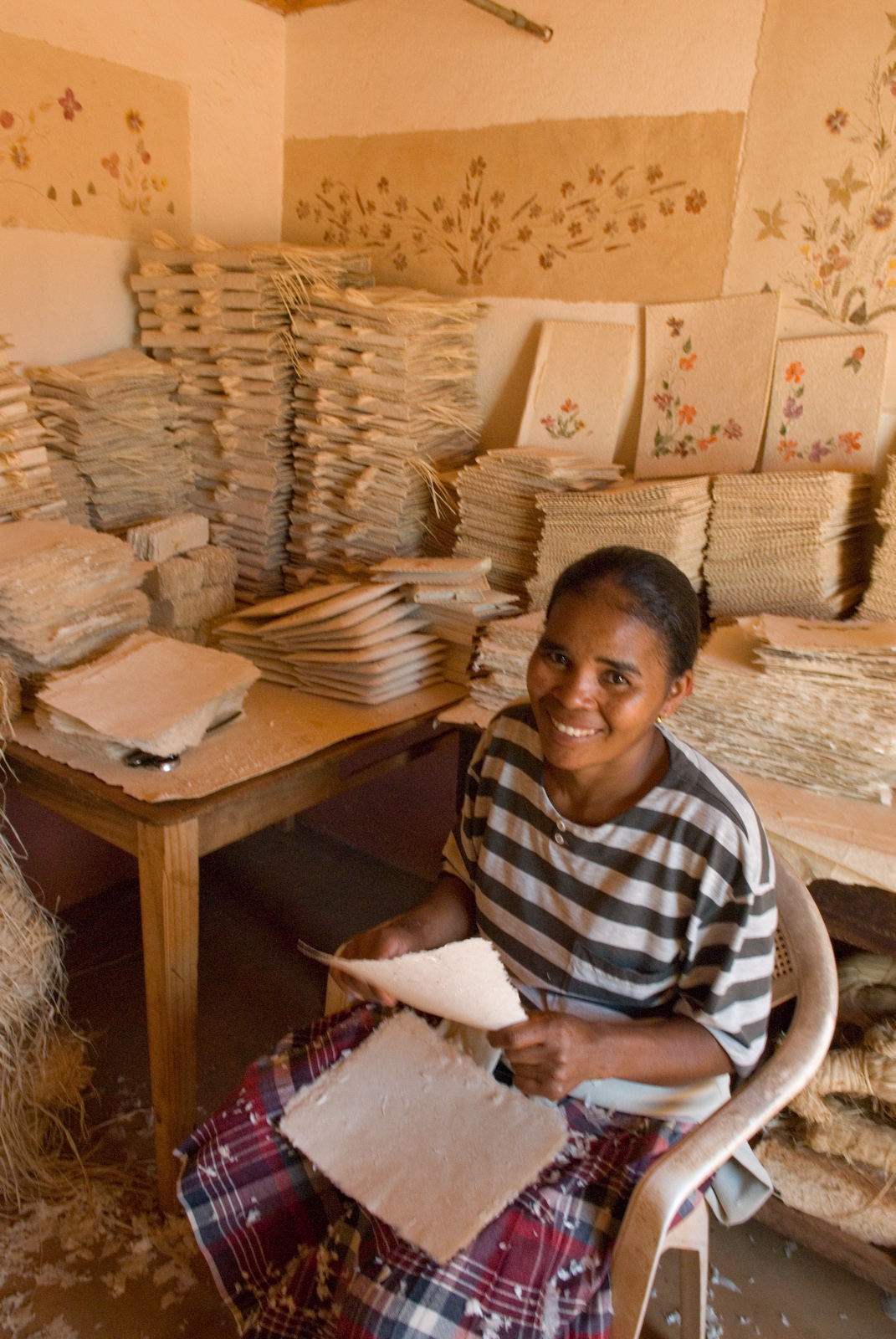|
Antambahoaka
The Antambahoaka are the least numerous ethnic group in Madagascar, numbering around 50,000 in 2013. They inhabit a small region along the southeastern coast of Madagascar near Mananjary and share their origins with the partially Arab Antaimoro people, from whom the group split in the 15th century under a leader named Ravalarivo. Very little is known about the history of this group after its founding. The Antambahoaka speak a dialect of the Malagasy language, which is a branch of the Malayo-Polynesian language group derived from the Barito languages, spoken in southern Borneo. The Antambahoaka are widely known for their Sambatra festival, a ritual group circumcision ceremony that occurs every seven years. This festival has been the focus of two short films released in 2008 and 2010. Their society is highly homogenous with little external migration and a strong sense of unified identity. Patriarchy, ancestor veneration and adherence to ancestral taboos ('' fady'') are core elem ... [...More Info...] [...Related Items...] OR: [Wikipedia] [Google] [Baidu] |
Andriana
Andriana refers to both the noble class and a title of nobility in Madagascar. Historically, many Malagasy ethnic groups lived in highly stratified caste-based social orders in which the ''andriana'' were the highest strata. They were above the Hova (free commoner castes) and Andevo (slaves). The Andriana and the Hova were a part of ''Fotsy'', while the Andevo were ''Mainty'' in local terminology. The Andriana strata originally constituted the nobility, warrior, and land owning class of the Merina society. They were endogamous and their privileges were institutionally preserved. While the term and concept of Andriana is studied with the Merina people of Madagascar, the term is not limited to them. The use of the word "Andriana" to denote nobility occurs among numerous other Malagasy ethnic groups such as the Betsileo, the Betsimisaraka, the Tsimihety, the Bezanozano, the Antambahoaka and the Antemoro. ''Andriana'' often traditionally formed part of the names of Malagasy kin ... [...More Info...] [...Related Items...] OR: [Wikipedia] [Google] [Baidu] |
Madagascar
Madagascar (; mg, Madagasikara, ), officially the Republic of Madagascar ( mg, Repoblikan'i Madagasikara, links=no, ; french: République de Madagascar), is an island country in the Indian Ocean, approximately off the coast of East Africa across the Mozambique Channel. At Madagascar is the world's second-largest island country, after Indonesia. The nation is home to around 30 million inhabitants and consists of the island of Madagascar (the fourth-largest island in the world), along with numerous smaller peripheral islands. Following the prehistoric breakup of the supercontinent Gondwana, Madagascar split from the Indian subcontinent around 90 million years ago, allowing native plants and animals to evolve in relative isolation. Consequently, Madagascar is a biodiversity hotspot; over 90% of its wildlife is endemic. Human settlement of Madagascar occurred during or before the mid first millennium AD by Austronesian peoples, presumably arriving on outrigger cano ... [...More Info...] [...Related Items...] OR: [Wikipedia] [Google] [Baidu] |
Malagasy People
The Malagasy (french: Malgache) are an Austronesian-speaking African ethnic group native to the island country of Madagascar. Traditionally, the population have been divided by subgroups (tribes or ethnicities). Examples include "Highlander" (ethnically Austronesian/Malay-Indonesian with less Bantu ancestry) groups such as the Merina and Betsileo of the central highlands around Antananarivo, Alaotra ''(Ambatondrazaka)'' and Fianarantsoa, and the "coastal dwellers" (ethnically Bantu with less Austronesian ancestry) with tribes like the Sakalava, Bara, Vezo, Betsimisaraka, Mahafaly, etc. The Merina are also further divided into two subgroups. The “Merina A” are the Hova and Andriana, and have an average of 30–40% Bantu ancestry. The second subgroup is the “Merina B”, the Andevo, who have an average of 40-50% Bantu ancestry. They make up less than 1/3 of Merina society. The Malagasy population was 2,242,000 in the first census in 1900. Their population experienced ... [...More Info...] [...Related Items...] OR: [Wikipedia] [Google] [Baidu] |
Mananjary, Fianarantsoa
Mananjary is a city located in Vatovavy, Madagascar with a population of 25,222 inhabitants in 2018. It is the chief city of the Mananjary district. It contains a town of the same name, situated on the southern part of the east coast, where the Mananjary River flows into the Indian Ocean. There's a small port and an airport. Mananjary is situated at 130 km south of Nosy Varika on the RN 11 The Canal des Pangalanes divides the town into two sections. In 2022 Cyclone Batsirai made landfall at Mananjary, leaving the city destroyed by 90%. Economy Agriculture production is focused on vanilla, coffee, and pepper production.Madagascar & Comoros pp. 230-31 (, 2008) [...More Info...] [...Related Items...] OR: [Wikipedia] [Google] [Baidu] |
Fady (taboo)
In Malagasy culture, ''fady'' () are a wide range of cultural prohibitions or taboos. People, places, actions or objects may be the subject of ''fady'', which vary by region within Madagascar. The taboos are believed to be enforced by supernatural powers, and are particularly connected with Malagasy ancestor worship. Although some are held nationwide, others may be particular to regions, villages or even individual families. ''Fady'' are an integral part of Malagasy identity and play an important part in community and identity formation. The word is a descendant of Proto-Austronesian *''paliSi'' (compare with Malay ''pemali'', Old Javanese ''pali-pali''). Common prohibitions include those against pointing at a tomb, against the eating of eels by pregnant women and, for onlookers, against describing a newborn baby as ugly. New ''fady'' are created constantly. When a new initiative or business is started, a ritual offering (''joro'') must be made to prove that it is not ''fady' ... [...More Info...] [...Related Items...] OR: [Wikipedia] [Google] [Baidu] |
United Nations
The United Nations (UN) is an intergovernmental organization whose stated purposes are to maintain international peace and security, develop friendly relations among nations, achieve international cooperation, and be a centre for harmonizing the actions of nations. It is the world's largest and most familiar international organization. The UN is headquartered on international territory in New York City, and has other main offices in Geneva, Nairobi, Vienna, and The Hague (home to the International Court of Justice). The UN was established after World War II with the aim of preventing future world wars, succeeding the League of Nations, which was characterized as ineffective. On 25 April 1945, 50 governments met in San Francisco for a conference and started drafting the UN Charter, which was adopted on 25 June 1945 and took effect on 24 October 1945, when the UN began operations. Pursuant to the Charter, the organization's objectives include maintaining internationa ... [...More Info...] [...Related Items...] OR: [Wikipedia] [Google] [Baidu] |
French Madagascar
The Colony of Madagascar and Dependencies (french: Colonie de Madagascar et dépendances) was a French colony off the coast of Southeast Africa between 1897 and 1958 in what is now Madagascar. The colony was formerly a protectorate of France known as Malagasy Protectorate. The protectorate became a colony, following Queen Ranavalona III's exile to island of Réunion. In 1958, the colonial administration in Madagascar was abolished, and it became autonomous territory of the French Community as the Malagasy Republic, which existed until 1975. History Background and French protectorate The United Kingdom had been an ally of Madagascar. In May 1862, John Russell, 1st Earl Russell, Britain's foreign secretary instructed Connolly Pakenham that Radama II should keep the country away from foreign powers. In 1882, the French started to occupy much of Madagascar's northern and western territories. In 1883, the Franco-Hova Wars commenced between France and Merina Kingdom, th ... [...More Info...] [...Related Items...] OR: [Wikipedia] [Google] [Baidu] |
Sorabe
Sorabe or Sora-be () is an alphabet based on Arabic, formerly used to transcribe the Malagasy language (belonging to the Malayo-Polynesian language family) and the Antemoro Malagasy dialect, dating from the 15th century. History Researchers are still hypothesizing about the origins of this transcription system. "Sorabe" means literally "large writings" from Arabic " sura" (writing) and Malagasy "be" (large). This denomination might point to the existence of a previous writing system with smaller characters of Sanskrit origin used in South East Asia as it is evidenced in some Malagasy words. Traditionally, researchers have speculated that this writing system was introduced through commercial contacts of Malagasy with Arab Muslims.Ferrand, Gabriel (1905) However, more recent studies claim that this writing scheme might have been introduced by Javanese Muslims.Simon P. (2006) There are striking similarities between "Sorabe" and " Pegon" writings (the Javanese version of Arabi ... [...More Info...] [...Related Items...] OR: [Wikipedia] [Google] [Baidu] |
Joking Relationship
In anthropology, a joking relationship is a relationship between two people that involves a ritualised banter of teasing or mocking. In Niger it is listed on the Representative List of the Intangible Cultural Heritage of Humanity. Structure Analysed by British social anthropologist Alfred Radcliffe-Brown in 1940, it describes a kind of ritualised banter that takes place, for example between a man and his maternal mother-in-law in some South African indigenous societies. Two main variations are described: an ''asymmetrical'' relationship where one party is required to take no offence at constant teasing or mocking by the other, and a ''symmetrical'' relationship where each party makes fun at the other's expense. The joking relationship is an interaction that mediates and stabilizes social relationships where there is tension, competition, or potential conflict, such as between in-laws and between clans and tribes. Extent While first encountered by Radcliffe-Brown in the 1920s, t ... [...More Info...] [...Related Items...] OR: [Wikipedia] [Google] [Baidu] |
Antaimoro
The Antemoro (or Antaimoro) are an ethnic group of Madagascar living on the southeastern coast, mostly between Manakara and Farafangana. Numbering around 500,000, this ethnic group mostly traces its origins back to East African Bantu and Indonesian Austronesian speakers like most other Malagasy. A minority of them belonging to the Anteony(aristocrats), Antalaotra(scribes of the Sorabe alphabet)or Anakara clans claim being descendants of settlers who arrived from Arabia, Persia but more likely Somalia from Dir_(clan) part of the human Haplogroup T-M184; the religion was soon abandoned in favor of traditional beliefs and practices associated with respect for the ancestors, although remnants of Islam remain in '' fady'' such as the prohibition against consuming pork. In the 16th century an Antemoro kingdom was established, supplanting the power of the earlier Zafiraminia, who descended from seafarers of Sumatran origin. The Antemoro(Anteony clan) soon developed a reputation as pow ... [...More Info...] [...Related Items...] OR: [Wikipedia] [Google] [Baidu] |
Ethnic Groups Of Madagascar Map
An ethnic group or an ethnicity is a grouping of people who identify with each other on the basis of shared attributes that distinguish them from other groups. Those attributes can include common sets of traditions, ancestry, language, history, society, culture, nation, religion, or social treatment within their residing area. The term ethnicity is often times used interchangeably with the term nation, particularly in cases of ethnic nationalism, and is separate from the related concept of races. Ethnicity may be construed as an inherited or as a societally imposed construct. Ethnic membership tends to be defined by a shared cultural heritage, ancestry, origin myth, history, homeland, language, or dialect, symbolic systems such as religion, mythology and ritual, cuisine, dressing style, art, or physical appearance. Ethnic groups may share a narrow or broad spectrum of genetic ancestry, depending on group identification, with many groups having mixed genetic ancestry. Ethni ... [...More Info...] [...Related Items...] OR: [Wikipedia] [Google] [Baidu] |
Barito Languages
The Barito languages are around twenty Austronesian languages of Indonesia (Borneo), Southern Philippines, plus Malagasy, the national language of Madagascar. They are named after the Barito River located in South Kalimantan, Indonesia. The Barito subgroup was first proposed by Hudson (1967), comprising the three branches ''East Barito'', ''West Barito'', and ''Mahakam (Barito–Mahakam)''. It is thought by some to be a ''Sprachbund'' rather than a genuine clade. For example, Adelaar (2005) rejects Barito as a valid group despite accepting less traditional groups such as North Bornean and Malayo-Sumbawan. The Malagasy language originates from the Southeast Barito languages, and Ma'anyan is its closest relative, with numerous Malay (close to Indonesian) and Javanese loanwords. It known that Ma'anyan people were brought as labourers and slaves by Malay and Javanese people in their trading fleets, which reached Madagascar by ca. 50–500 AD. Greater Barito Blust (2006) ... [...More Info...] [...Related Items...] OR: [Wikipedia] [Google] [Baidu] |






